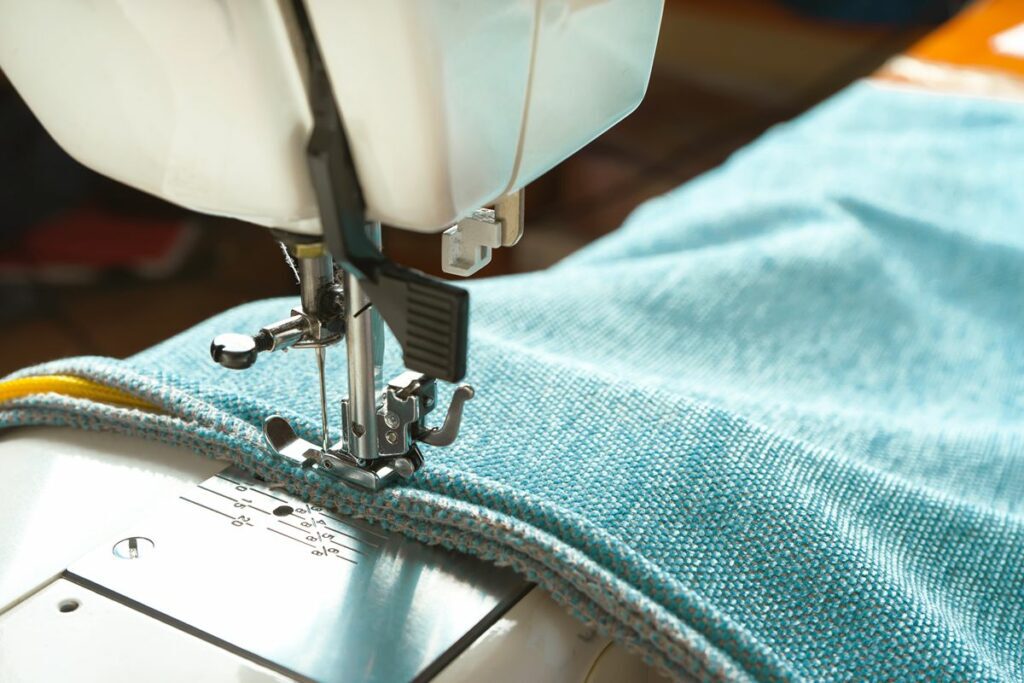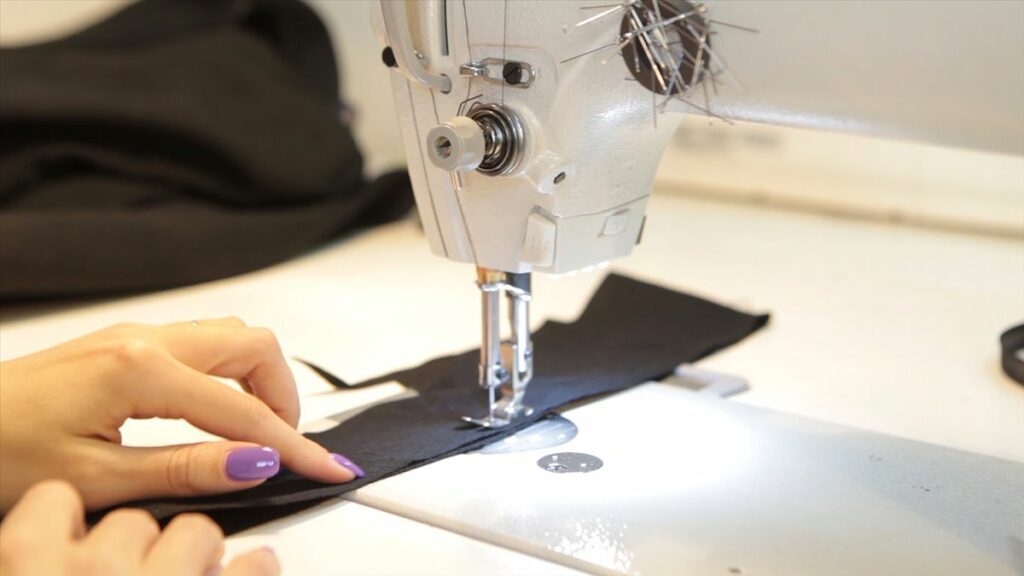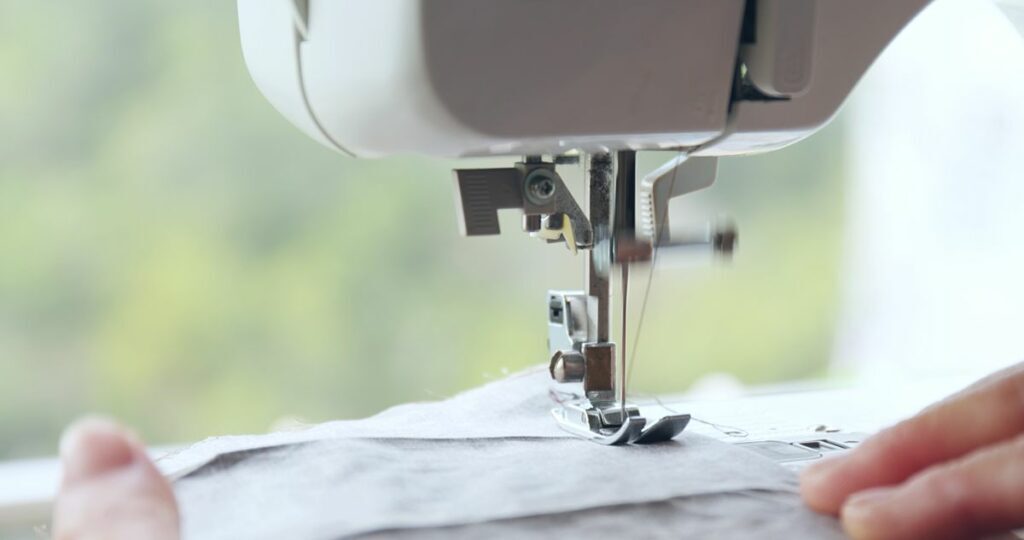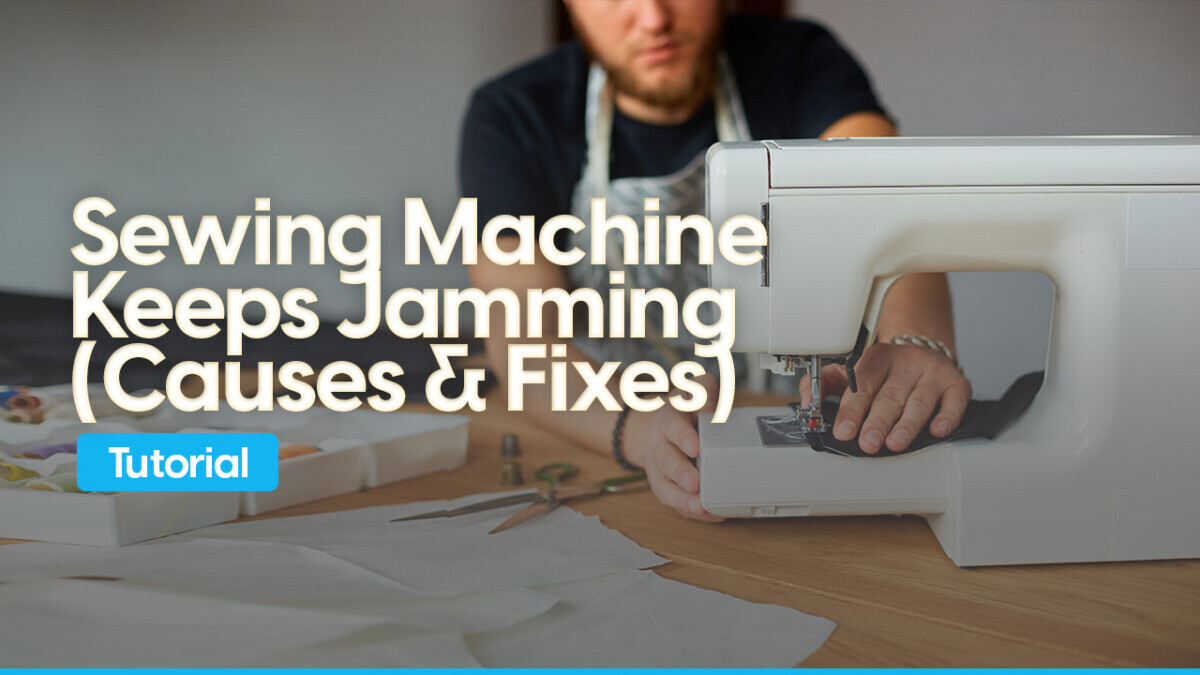You’re in your element, creating magic with fabric and thread, when suddenly, your sewing machine jams. Annoying, right? This common issue can disrupt your workflow, but don’t worry, you’re not alone.
Whether it’s due to lack of maintenance, tension issues, needle mishaps, bobbin problems, or stitch errors, we’ve got you covered. Let’s dive into these culprits, understand what causes them, and explore practical ways to prevent your sewing machine from jamming again.
7 Reasons Your Sewing Machine Might Be Jamming
Lack of Tension on the Upper Thread

You’re likely experiencing sewing machine jams due to improper tension on the upper thread, which is a common issue among sewers. It’s crucial to understand that the tension balance between the upper thread and the bobbin thread determines the quality of your stitches.
If the tension on the upper thread is too loose, it’ll cause the thread to bunch up and potentially jam your machine. On the flip side, if it’s too tight, it can pull the bobbin thread up, creating uneven stitches.
To correct this, always ensure you’ve threaded your machine correctly. Follow your machine’s threading guide meticulously. Additionally, adjust the tension settings according to the thickness of your thread and fabric. That’ll save you hours of frustration and keep your machine humming along smoothly.
Clogged Machine at Some Point or Place
It’s likely that your device is clogged at some point, perhaps due to an accumulation of dust, lint, or even tangled threads. This buildup can impede the smooth operation of your sewing machine, causing it to jam. It’s crucial to conduct regular maintenance, including thorough cleaning.
Use a small brush or canned air to remove debris from the bobbin case and underneath the needle plate. Be careful not to push dust further into the machine.
You’ll also want to check for thread jams. An incorrectly threaded machine can result in thread bunching up and clogging your device. Refer to your manual for the correct threading procedure.
With regular cleaning and proper threading, you’ll keep your machine running smoothly, avoiding annoying jams.
Deformed or Broken Needle

Don’t underestimate the impact of a deformed or broken needle on your stitching projects; it’s often the root cause of many problems. Bent, dull, or damaged needles can interfere with your machine’s timing, leading to skipped stitches, thread breaks, and worse, jamming.
Examine your needle carefully; even the slightest bend can cause issues. If you’re regularly dealing with jams, consider changing your needle after each project. It’s not an overkill, it’s a preventative measure.
Malfunctioning Feed Dogs
When feed dogs aren’t functioning properly, they can’t move the fabric along smoothly, leading to stitch irregularities and jams. You could be dealing with dust or lint buildup around the feed dogs, which can hinder their movement. Regular cleaning can help you avoid this.
Sometimes, the feed dogs might be worn out or damaged, in which case, they’d need replacing. The height of the feed dogs can also affect how they perform. If they’re set too low, they won’t be able to grip the fabric effectively. Make sure they’re at the right height for your fabric type.
Lastly, check that they’re moving in the right motion – up, towards you, down and back. If they’re not, you might need to get your sewing machine serviced.
Low Quality Thread

You’ve probably noticed that low-quality thread can cause a whole host of problems with your stitching. It’s not just about aesthetics; it can also cause your sewing machine to jam. Poorly constructed thread tends to fray, leading to a buildup of lint in your machine. This can clog up the works, causing your sewing machine to seize up.
Not only that, but uneven thread can cause tension issues, leading to uneven stitches and puckered fabric. It’s always worth investing in a high-quality thread. It’s smoother, stronger, and less likely to cause issues. Remember, your sewing project is only as good as the materials you use. Don’t let inferior thread ruin your hard work.
Tangling Caused by Improper Threading
Improper threading can often lead to tangling, which, in turn, can cause a whole host of issues for your project. You may find your stitch quality suffering, your machine jamming, or your thread breaking entirely. It’s essential to thread your machine correctly to avoid such complications.
Make sure you’re not rushing the process. Follow your machine’s threading guide step-by-step, ensuring each thread goes into the correct slot and through the correct loop. Also, remember to thread your machine with the presser foot raised; this opens up the tension disks and allows the thread to properly seat itself.
If your thread is still tangling, double-check your bobbin. It should be correctly wound and inserted. Remember, a little attention to detail can save you a lot of frustration.
Skipped Stitches
Skipped stitches can really throw off your project, especially if you’re working on a delicate fabric. It’s frustrating, but don’t worry. There are a few potential causes you can check.
Firstly, make sure you’re using the right size and type of needle for your fabric. A dull or bent needle can lead to skipped stitches. Also, ensure it’s properly inserted. Replace the needle after every project, it’s a small step that can make a big difference.
Secondly, double-check your threading. Incorrect threading can also cause this issue.
Lastly, look at your bobbin. Is it correctly wound and placed? Are you using the right type?
Conclusion
So, you see, keeping your sewing machine running smoothly isn’t a mystery.
Regular maintenance, correct tension, and proper needle and thread usage can prevent jams.
If you’re still struggling, remember to check the feed dogs and ensure correct threading.
Don’t let skipped stitches or low-quality thread derail your creativity.
With a bit of knowledge and patience, you’ll keep your machine humming along and your projects on track.
Happy sewing!
I am a proud mother of two amazing daughters, and i run our sewing & embroidery business full time. I am also a part-time writer for this blog, because i love sharing my findings and experiences!



